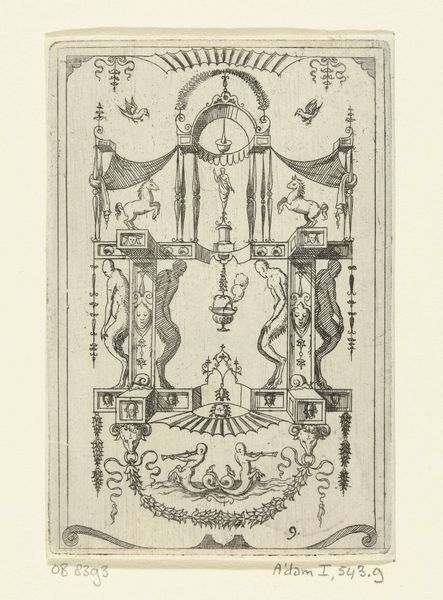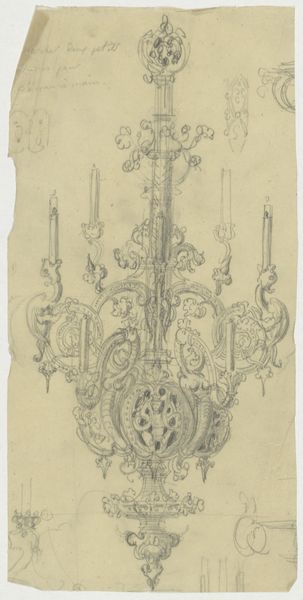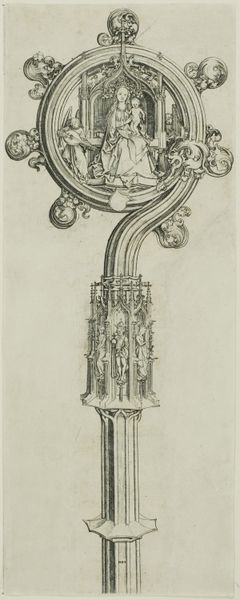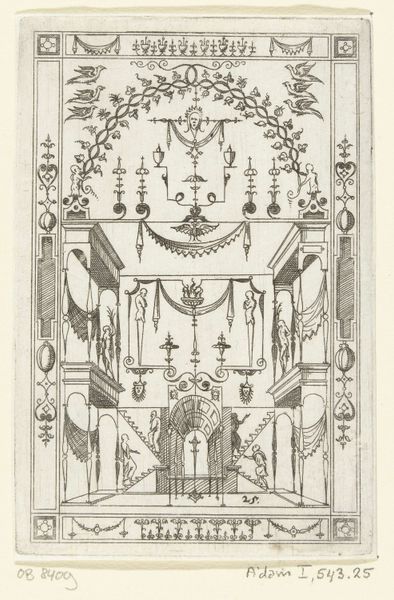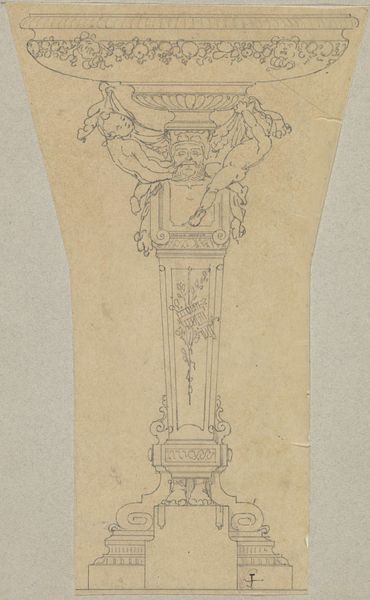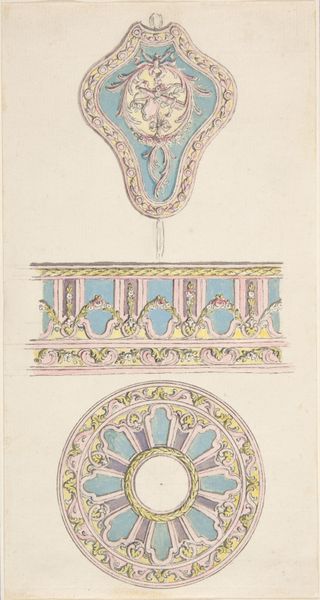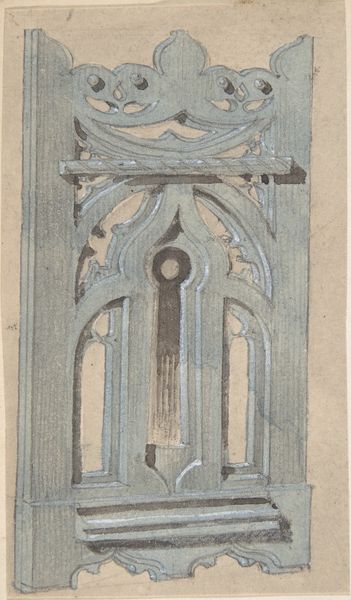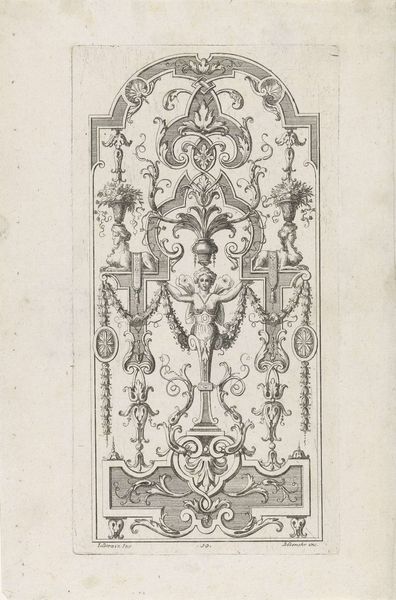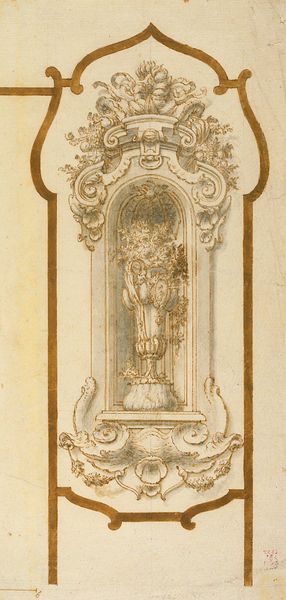
Ontwerp voor een kabinetje bij Arent van Hasselt, Keizersgracht 584, Amsterdam 1783
0:00
0:00
jurriaanandriessen
Rijksmuseum
drawing, paper, ink
#
drawing
#
neoclacissism
#
paper
#
ink
Dimensions: height 121 mm, width 92 mm
Copyright: Rijks Museum: Open Domain
Curator: Here we have Jurriaan Andriessen’s "Design for a Cabinet in the Home of Arent van Hasselt, Keizersgracht 584, Amsterdam," dating from 1783. The artwork, made with ink on paper, gives us a detailed look at a neoclassical interior design concept. Editor: My first impression is one of restrained elegance. The pale washes of color, the precise lines... it evokes a sense of calm order, almost like a stage set awaiting players. Curator: Indeed. The design exemplifies the Neoclassical movement, which sought to revive the perceived purity of classical forms after what was seen as the excesses of the Baroque and Rococo periods. Notice the symmetry, the restrained ornamentation, the use of classical motifs like garlands and urns. This was very much about projecting an image of rational thought and refined taste. The Van Hasselt household, no doubt, was trying to project their understanding of enlightened taste for the time. Editor: The musical instruments positioned above the vase strike me. The lyre, the pipes...they are arranged like a still life but seem also intended as symbols of cultural achievement and harmony. It's more than mere decoration; there's an invocation of the arts as a civilizing force, right? Curator: Precisely. These symbols were potent indicators of education, wealth, and engagement with intellectual pursuits. The arrangement tells us much about how Van Hasselt and Andriessen wished to be seen—sophisticated patrons of the arts, immersed in enlightened ideals. The use of muted colors reinforces the controlled intellectual climate valued by elites during that period. It's about conveying status through cultivated artistic appreciation. Editor: So, it's more than just pretty drawings on paper. It represents aspirations and cultural positioning? It's interesting to consider this sketch embodying powerful ideals of that period. Curator: Absolutely. In addition to offering visual insight, this plan provides social and political context. Editor: Contemplating the intricate layers of symbolism present really opens up new areas of historical understanding. Curator: Exactly, isn't that just beautiful?
Comments
No comments
Be the first to comment and join the conversation on the ultimate creative platform.
